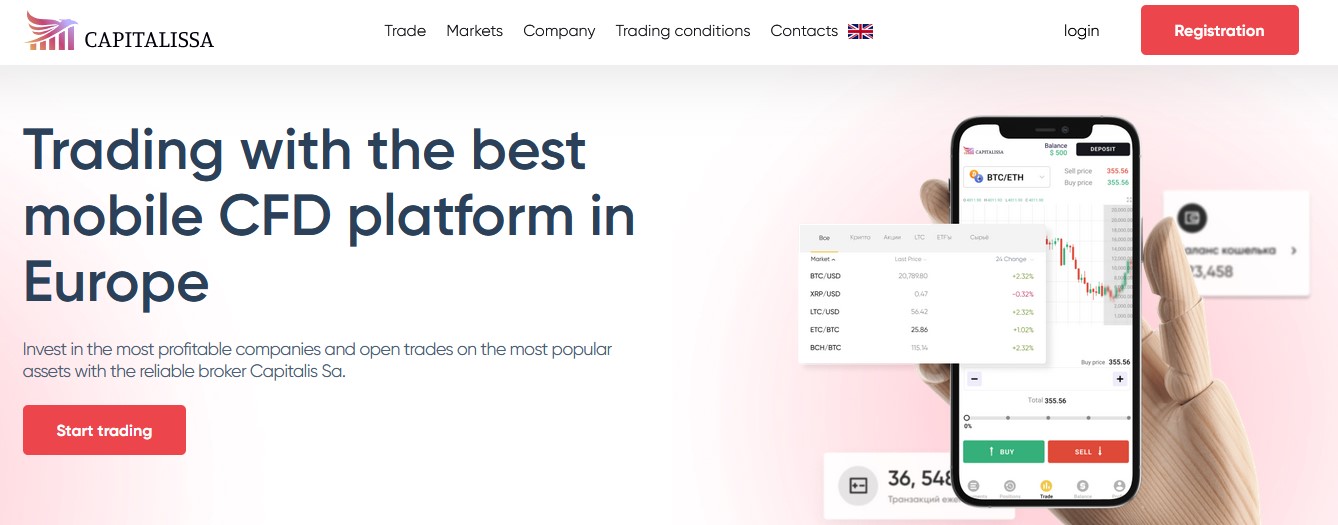What is a gap in trading? The Complete Guide and Strategies for Gap Trading
 Julius Conley
16 / March / 22
Visitors: 1013
Julius Conley
16 / March / 22
Visitors: 1013
The gap in trading is of great interest to some traders and carefully avoided by others. If you look at the chart of any financial instrument, especially if it is traded on the stock markets, then you will most likely notice at least one price gap almost immediately - this is the gap.
Everyone who trades in the financial markets should be aware of what a gap is, the different types of gaps, and what opportunities exist for gap trading.
What is a gap?
Gap is a term that comes from the English word "gap", which can literally be translated as "gap", "gap", "interval". On a stock chart, a gap is seen as a "hole" between Japanese candlesticks or bars.
In financial jargon, the definition of gap is as follows:
A gap is an area of the chart in which there has been a sharp upward or downward change in the price of a financial instrument, resulting in a price gap between adjacent quotes.
Gaps indicate gaps between supply and demand in the market. A gap occurs when supply does not match demand for a particular financial instrument, and vice versa when demand does not match supply.
On the chart of a financial instrument, a gap is the intervals between quotes. It is important to remember that you can see the price gap on two types of charts - candlestick charts and bar charts - however, gaps are not visible on the line chart, since they are plotted only by closing points.
The nature of gaps is not always known to traders, especially beginners, and this is unfortunate, since gaps in the markets represent a very interesting concept and opportunity for trading in financial markets.
Gap on the stock exchange: causes
Gaps are a common occurrence in financial markets and appear on charts mainly for two reasons:
- Opening and closing markets at different quotes
- News release causing markets to move up or down too fast
It is much easier to predict the occurrence of gaps at the opening and closing of markets than when they arise as a result of the release of economic news.
Example:
- The DAX 40 index is available for trading from 8:00 to 22:00. When the market opens in the morning, the opening price may not match the closing price at 22:00. In this case, we are talking about a gap at the opening of a new trading session.
In the foreign exchange market, gaps can also occur more often between the close of Friday evening at 22:00 CET and the market open on Sunday evening at 23:00 CET.
- In the foreign exchange market, a gap can form between Friday's closing price and Monday's opening price. However, the Forex market operates 24 hours a day, 5 days a week, so gaps are much more predictable.
However, news gaps in the Forex market are much more difficult to predict and sometimes impossible to predict. News that in the past led to major movements in the foreign exchange market:
- Military conflicts, natural disasters and pandemics
- Central bank decisions
- Macroeconomic news such as reports on GDP, labor market, inflation, etc.
Example:
When the Swiss National Bank removed the minimum exchange rate of the Swiss franc against the euro at 1.20 in January 2015. This led to the collapse of the currency pair, which went down in history. According to some reports, the EUR/CHF pair lost about 30% of its value in just a few hours.
This type of gap is due to the lack of liquidity in the market. Trading stops for a while, and the new market price can often be very different from the price before the gap.
This kind of market gap is very difficult to predict, so it is very important to practice proper risk and capital management, as well as to use high volatility protection settings.
Gap in trading: types
Are you wondering if there are different types of gaps in the market? - The answer is yes!
Let's take a look at the different types of price gaps that can occur in Forex or other financial markets. To create a gap trading strategy, first of all, a very good knowledge of the different types of gaps is necessary.
Simple (or regular) gap
A simple gap is a gap in prices that is not very large in size and, as a rule, quickly fills / closes after it occurs. This is the most common type of gap, and a short-term trading strategy can be applied to it.
Can we know for sure that a gap will occur at the open of the Forex market? Typically, a gap occurs when important events occur, economic news comes out, or rumors appear during the weekend.
- If any of the above did happen, you can expect a gap in Forex. In this case, the gap trading strategy is short-term or even intraday - a simple gap in the market closes in just a few candles.
- The Forex market is the most liquid market in the world, so, for example, gaps in Forex can fill faster than gaps in indices
Of course, there may be exceptions to this rule. For example, the DAX40 (formerly DAX30) index is a liquid market where gaps often fill.
Breakout Gap
A breakout gap means that the price breaks through the trading range with a gap and then continues to move in the same direction. Due to a strong momentum, the price breaks through the border of the consolidation range in one of two directions, forming a gap between quotes. A breakout gap is most often seen after a period of consolidation, and after this breakout gap a new trend is formed on this financial instrument.
A breakout gap often occurs after a period of consolidation, and after the gap a new trend is formed.
Gap to continue (or to break away)
In the stock market, the strength of this signal, determined by the gap, can also be confirmed by market volumes (exchange volumes of traded contracts).
- A continuation gap is formed with a clear price trend. Such gaps indicate a long-term trend, so this type of gap trading can be called one of the most reliable, especially in combination with the Price action strategy.
In most cases, traders expect that after closing this type of gap, they will be able to move in the direction of the latest trend. However, this is not always the case.
Climax gap
An exhausting gap is most common in the stock markets, but it can also be found in the Forex market, although much less frequently. The formation of an exhaust gap occurs at the end of a previous trend and signals the last momentum before the price reverses its direction.
These gaps can only be traded after you have identified them exactly. Only then can you trade in the direction of the new trend.
Gap Forex: how to protect yourself from gaps in the market?
Some brokers have developed a volatility protection mechanism that can benefit many traders when trading the financial markets, especially when trading in gap conditions.
- Volatility protection settings allow you to cancel pending orders if they are within the gap.
This can help avoid instant losses that can occur if you have pending orders with a stop loss level when both orders are activated at the same price.
A volatility protection mechanism can play a key role in your trading if you are using weekend trading strategies, for example.
Gap trading: what does it mean to close a gap, and is it possible to fill it?
- A gap is considered filled (or closed) when the price of a financial instrument reaches the price that preceded the gap, whether it is the tail or the body of the candle.
Some traders believe that the market gap often fills up. However, this does not mean that the closure occurs immediately:
A market gap may close much later, in which case a short-term gap trading strategy may not work well.
Although most market gaps are subsequently filled, there are some gaps that do not end up being closed. Most often, continuation gaps remain unfilled.
Gap trading
Many traders wonder what gap trading strategy to choose. In this part of the article, we will give some recommendations that may be useful when trading in the conditions of a gap in the financial markets.
Given the fact that the gap usually closes completely, a bearish gap in a bull market can be a very good opportunity to buy an asset that has fallen in price just before the gap fills up to generate some profit. With gap trading like this, you can profit from the first pullback in response to the gap.
This hypothesis is also confirmed from a technical point of view. The stock market often closes a gap and tests previous levels before starting to move in the form of a sustainable trend (or continuing the previous one).
- However, you need to be careful: the gap does not always close during the same trading session!
Thus, a simple bearish gap may represent an opportunity to buy shares at a better price. As we saw above, gaps can come in many forms and it is useful to trade them once you have identified their type and why they occur.
Let's take a look at their types:
- Simple (or regular) gap
- Breakout gap
- Continuation gap
- Climax gap
Continuation Gap
How to trade a gap, and what to choose: swing trading, scalping or day trading?
Many traders wonder what type of trading is best for gap trading. Some traders with small trading accounts and large leverage avoid swing trading and long-term trading due to gaps in particular.
Traders who use low leverage and trade long-term use the gap as a tool to analyze charts and confirm market sentiment.
Gaps can be combined with swing trading or day trading, but scalping will be a little more difficult (but still possible) due to higher market spreads around the gap and lack of liquidity. The difference between a profitable trader and a losing trader with a trading strategy is also money management, a good trading strategy and trading psychology.
We have compiled a list of brokers, that we recommend avoiding.







